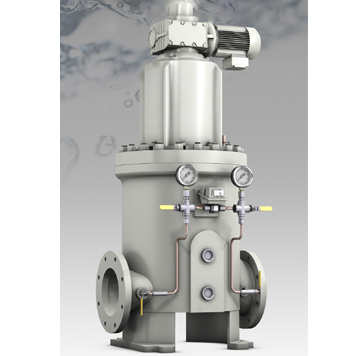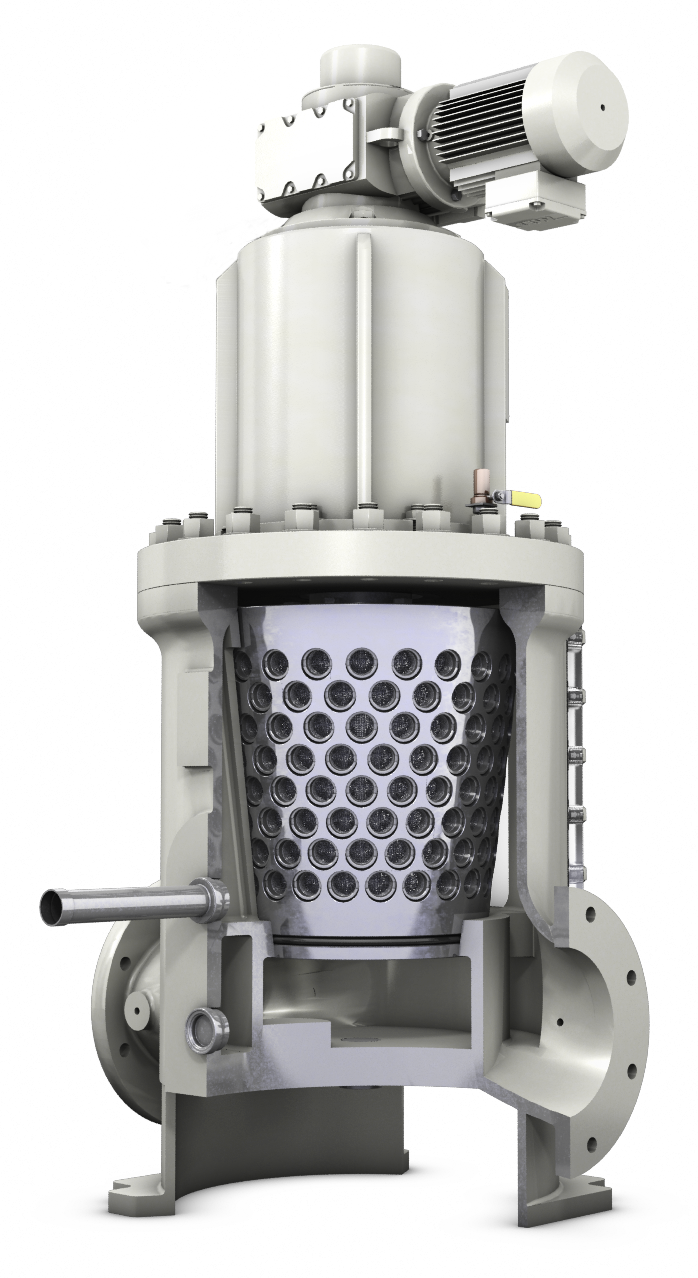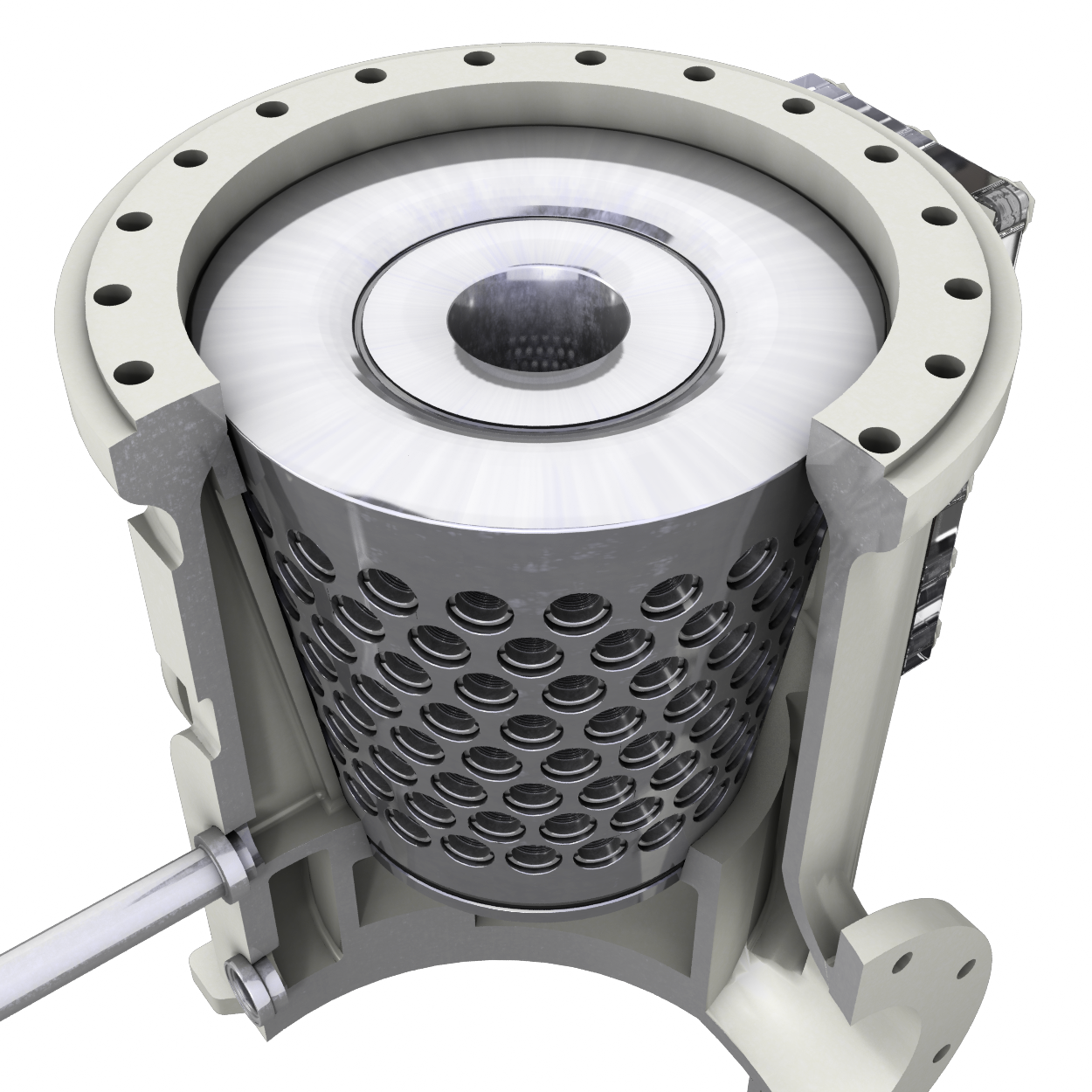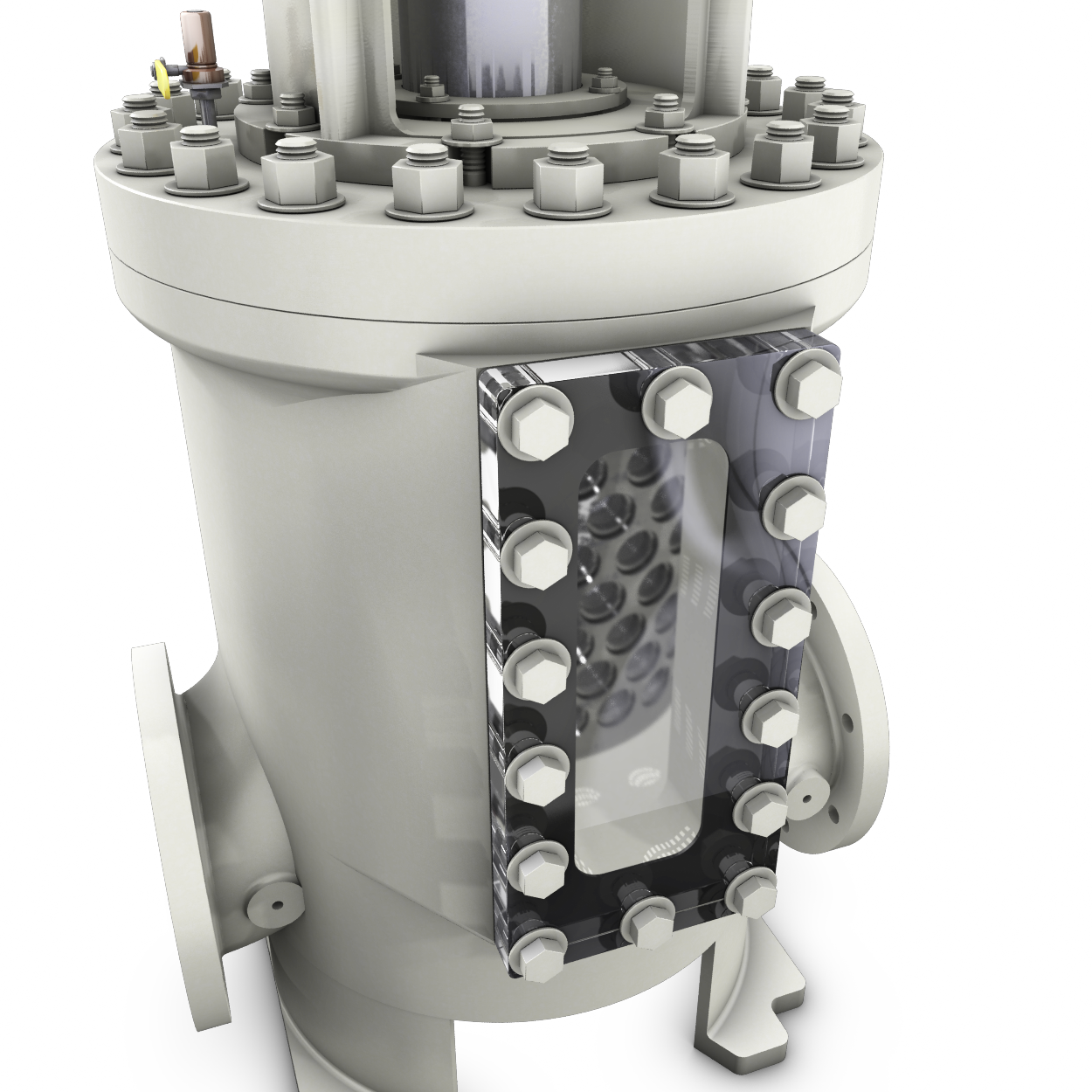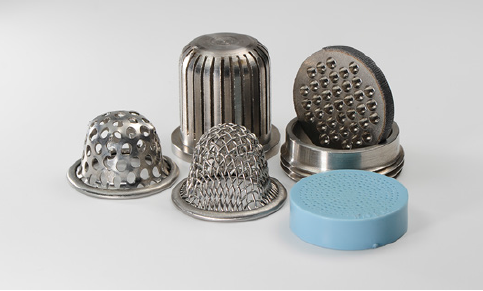S.P. Kinney is most noted for our heavy-duty Model A and Model AP Automatic Self-Cleaning Strainers . The Model A is designed for operation where the pressure 20 psi and up. Both models employ the use of a rotating cylindrical drum with a number of threaded holes containing one of many types of straining media. The drum is supported on a rotating shaft fitted with bearings and is contained in a body having a vertical backwash slot opening adjacent to the drum surface.
APPLICATIONS
The Model “A” is designed for continuous removal of suspended particles from all types of liquids. Applications are in industrial plants using river, lake, well, or sea water for cooling, descaling, bearing lubrication, spraying, quenching, and similar purposes. Pipe line sizes: 2”- 42” or larger upon application. Liquids other than water, such as chemicals, acids, white water (paper mills), sewage, and ammonia flushing liquor (coke plants) can also be effectively strained.
INSTALLATION
Installation is made on the discharge side of a pump or in any piping system operating under a positive pressure. The mini mum working pressure required to effectively clean the straining media is 20 psi. The strainer is compact with small face- to-face, width, and height dimensions.
DESIGN
The strainer consists of a conical drum with a number of threaded holes containing one of many types of straining media. The drum is supported on a rotating shaft fitted with bearings and is contained in a body having a vertical backwash slot opening adjacent to the drum surface.
OPERATION
The liquid to be strained enters the inlet connection located in the lower portion of the body and flows around the outer surface of the drum. The suspended particles are retained in the media pockets, and the clean liquid passes through the media to the inside and bottom opening of the drum. The clean water can then continue through the outlet connection located diametrically opposite the inlet.
BACKWASH
As each row of straining media passes the backwash slot, a reversal of flow occurs, flushing the suspended particles from the media pockets. This reversal of flow is caused by a pressure differential between the interior of the strainer and the atmosphere. The backwash flow rate is exceptionally low and will vary, depending on the amount of suspended particles in the liquid.
AUTOMATIC BACKWASH CONTROL
In lieu of a manually operated backwash valve, an automatic control can be furnished to permit intermittent backflushing. This control consists of an electric or pneumatically operated ball valve, actuated by a timer or a pressure differential switch (or both).
ADJUSTMENT AND SHEARING ACTION
The clearance between the backwash slot and the drum is equal to or smaller than the opening presented in the media and can be adjusted easily by two locknuts on the threaded part of the top section of the shaft. The backwash slot contains a knife-like edge which enables the strainer to shear debris such as wood, shells, fish, and other suspended materials which may extend beyond the surface of the drum – with no resultant damage to the drum, straining media, or drive unit.
INSPECTION
The Kinney Model “A” strainer eliminates troublesome disassembly by providing an opening in the side of the strainer body. To inspect the straining media, simply remove the cover and manually rotate the drum. As each row of media passes the inspection opening, easy access to the media is achieved.
Contact S.P. Kinney with your Strainer’s serial number for a General Arrangement Drawing and Parts List
Download More Information:
Brochures:




